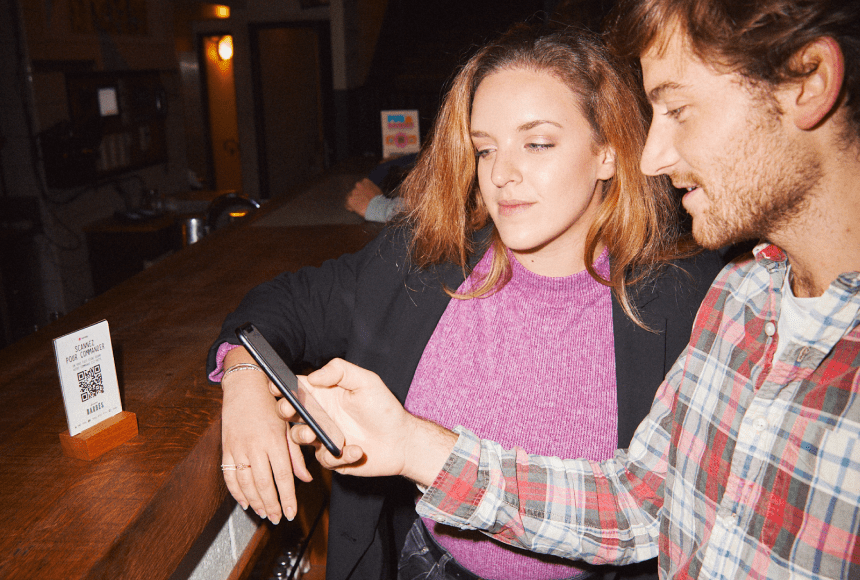
Simplifying Your Restaurant’s Tech Evolution with QR Codes
Why QR Code Ordering Is Changing the Game
Pop into any busy restaurant these days, and you’ll likely see diners scanning small black-and-white squares to browse menus or pay their bills. QR codes have gone from novelty to near-standard in a remarkably short time. They help restaurants improve efficiency and customer satisfaction, all while reducing physical contact points.
But if your establishment still relies on more traditional ways of taking orders, you may be wondering how to integrate this technology without turning your current workflow upside down. After all, you’ve already invested in a point-of-sale (POS) system, staff training, and a well-honed process for seating and serving.
The good news? QR code ordering can blend seamlessly into most restaurant operations, provided you plan carefully and choose the right approach. Below, you’ll find practical tips on how to move forward with minimal hassle. By the time you’re done reading, you’ll see that adopting QR codes isn’t just a “nice-to-have” — it’s often a smart next step toward a modern, frictionless dining experience.
Recognising the Shift to QR Code Ordering
QR codes have exploded in popularity over the past few years. What started as a health and safety measure for contactless ordering has evolved into a powerful convenience factor. In a KPMG report (KPMG insights), 68% of surveyed diners said they prefer digital or contactless ordering options for reasons ranging from speed to the ability to customise orders without feeling rushed.
What does this mean for your restaurant? Simply put, consumer expectations have changed. Many diners now assume they can scan a code to see the menu, place their order, and even handle payment. By meeting that expectation, you show that your business is up to date and values customer convenience.
But maybe you’re not sure where to begin. Perhaps you’re worried about losing personal interaction between customers and staff, or you’re afraid you’ll have to replace your entire POS. Rest assured, there’s a path forward that keeps your current system intact, while adding a modern twist via QR codes.
Assessing Your Current Setup
Before diving in headfirst, take a clear look at the technology and processes you already have. A thorough assessment helps you choose a QR code solution that aligns perfectly with your workflows.
- POS Compatibility: Check your current POS system’s specifications. Does it have an open API that allows third-party apps to integrate? Is it cloud-based or on-premise?
- Kitchen Workflow: Do you rely on printed tickets, or do your chefs use a kitchen display system (KDS)? Your QR code orders must flow neatly into whichever method you use to manage tickets.
- Menu Complexity: If you frequently change dishes or run limited-time specials, you’ll want a solution that makes quick menu edits painless. A static system can be frustrating if your menu evolves every week.
- Staff Tech Comfort: Evaluate how well your team understands digital tools. Are they comfortable with tablets or smartphones? This will influence the training you’ll need to provide.
By answering these questions, you’ll see which features are non-negotiable for your restaurant. For instance, if you run a high-volume venue, you probably need a QR code platform that can handle rapid ticket creation. If you operate a fine-dining restaurant with lots of specials, real-time menu updates might be top priority.
Choosing the Right QR Code Platform
Your choice of platform (or app) can make or break the integration process. You need something that talks nicely to your POS while also delivering a smooth experience for diners.
Here’s what to look for:
- Seamless Integration:Any time you can eliminate manual data transfer, do it. A good QR code solution pushes orders directly to your POS or your KDS, so staff don’t have to re-enter anything. It should also handle modifications or special requests, relaying them accurately to the kitchen.
- Customisable Interface:You want control over how your menu appears. Ideally, you can upload your branding, item descriptions, and any mouth-watering photos. The system should let you rearrange or add categories, so your digital menu mirrors your physical one.
- Payment Processing:Many QR code platforms also handle payments, allowing diners to settle their bill from their phone. That means fewer trips to the table with a card reader, reducing friction. Some, like Sunday, even allow diners to leave a tip or share a quick Google review right after paying.
- Offline Capabilities:Restaurant Wi-Fi can be unpredictable, and mobile data signals sometimes drop. Make sure your chosen solution has some kind of fail-safe or offline mode so that your dining room doesn’t grind to a halt if the internet blinks.
Remember, your main goal is to have a system that effortlessly fits into your existing tech stack. A strong integration ensures minimal disruption and helps your team adapt more quickly.
Prepping Your Menu for QR Code Integration
One of the joys of QR code ordering is that you can make menu changes in real time without reprinting anything. But first, you’ll want to organise your digital menu in a way that’s easy to browse on a phone screen. That means concise descriptions, clear item categories, and mouth-watering photos or icons where relevant.
- Layer Your Menu: If your menu is large, create subcategories like “Starters,” “Mains,” “Vegetarian,” and “Kids’ Menu.” Let diners drill down to find exactly what they want. A single long list can feel overwhelming on a phone.
- Use High-Quality Images: People eat with their eyes first, even digitally. Crisp, well-lit photos can boost sales of certain dishes. Just ensure the images don’t slow down load times too much.
- Highlight Key Details: Include allergen information or special dietary notes (vegan, gluten-free) right in the listing. It saves diners from hunting around for that info. The more transparent you are, the fewer queries staff have to handle.
- Test on Multiple Devices: Check how your QR menu looks on both Android and iOS phones, as well as different screen sizes. You don’t want a gorgeous layout on an iPhone 13 but a chaotic mess on an older Android model.
Investing time here pays off. A well-structured digital menu speeds up ordering, impresses customers, and reduces mistakes. It also sets the stage for add-ons and upsells. Think of it like your physical menu’s digital cousin — only more flexible and interactive.
Training Your Team for Success
The best technology won’t do you much good if your staff isn’t on board. And let’s face it, new tools can cause initial nerves. Reassure your team that QR code ordering isn’t replacing them. In fact, it often frees them to focus on personal connections and high-value tasks, rather than manually entering orders or chasing after credit card slips.
- Hands-On Demonstrations: Let employees test-drive the QR code system as though they’re customers. Have them scan, place an order, and see how it arrives in the POS. Hands-on experience is far more effective than abstract explanations.
- Explain the “Why”: Emphasise that a smooth QR code process leads to happier diners, better tips, and fewer errors. Show them how it can ease the dinner rush or reduce long lines for payment.
- Encourage Feedback: Once they start using the system in real shifts, ask servers and hosts what’s working or not working. You might discover small tweaks that make everyone’s life easier, like rearranging a popular menu section or clarifying an item name.
- Plan for “What Ifs”: Train staff to handle the occasional diner who doesn’t have a smartphone or refuses to use QR codes. Keep physical menus on hand or let them order in the traditional way. The key is flexibility.
When your team feels confident, they become your best ambassadors to diners. If a customer looks puzzled scanning the code, a calm, knowledgeable server can step in to guide them. That extra bit of help goes a long way toward making the switch a success.
Addressing Common Concerns
Despite its rising popularity, QR code ordering can still spark questions or doubts from both staff and guests. Here are a few frequent concerns and ways to tackle them:
- “Won’t it feel impersonal?”Actually, QR codes can free staff from routine tasks, giving them more time to chat with diners, discuss specials, and ensure top-notch service. You’re not removing human interaction; you’re removing friction.
- “What if a diner isn’t tech-savvy?”Have a backup plan: keep a couple of printed menus around, and train servers to input orders if someone is uncomfortable with their phone. Most people in 2023, let alone 2024 or 2025, are quite used to scanning QR codes by now.
- “Is it secure?”Reputable QR code solutions use encrypted connections for handling orders and payments. They often partner with well-established payment gateways. Just confirm that any app you choose meets PCI compliance standards to protect card data.
- “Do we lose tip opportunities?”Actually, some restaurants report higher tips when digital tipping is built in. Diners see a prompt for gratuity, and adding an extra pound or two is just a tap away.
As long as you educate your staff and set realistic expectations, these concerns can be easily managed.
Rolling Out the New System
When it’s go-live day, keep communication clear and positive. Explain to diners that this new option is there to make ordering and payment simpler. Post small signs on tables with a short explanation: “Scan here to view our digital menu and place your order — no app required!”
For the first few weeks, you might encourage staff to mention the QR option when greeting customers: “You can check out our specials on your phone by scanning the code, or I can bring you a menu if you prefer.” This gentle approach helps customers feel at ease, rather than forced into an unfamiliar process.
Monitor the transition closely:
- Observe Wait Times: Notice if the time from seating to ordering decreases. If so, great sign. If not, find out where the hang-up might be.
- Check Error Rates: Are fewer dishes going back to the kitchen for mix-ups? That’s often a quick way to see if the new system is helping.
- Collect Feedback: Ask diners how they found the experience. Some might love it; others may offer tips on how to improve. Both perspectives are valuable.
Keeping an Eye on the Results and Evolving
Like any significant operational shift, the impact of QR code ordering is something you’ll want to measure over time. Don’t just install the system and walk away. Instead, track key metrics that matter to your restaurant:
- Average Order Value: Do diners spend more when ordering from a digital menu? Some restaurants see an uptick because customers have the freedom to browse and add extras.
- Table Turnover Rate: Are tables clearing faster, thanks to quicker payments and streamlined ordering? This can directly boost revenue, especially during peak hours.
- Customer Satisfaction: Look at review sites or in-app feedback. Are people commenting positively about the easy ordering process?
- Server Efficiency: Ask your team if they feel less pressured. Are they able to manage more tables comfortably?
Use these insights to refine your approach. Maybe you’ll reorganise your digital menu so your most profitable dishes appear first. Or perhaps you’ll add short, playful descriptions to items that aren’t selling well. The digital format means you can pivot quickly, so take advantage of that flexibility.
Reaping the Rewards: A Unified, Customer-Centric Experience
When QR code ordering slots neatly into your existing system, everyone benefits. Diners love the convenience and accuracy, your staff can focus on personal engagement, and your bottom line often sees a boost from faster turnover and higher average checks.
In many cases, solutions like Sunday amplify these advantages by offering an intuitive payment flow, integrated tipping, and a one-tap option for diners to leave a Google review. This synergy not only drives immediate satisfaction but can also strengthen your restaurant’s online reputation in the long run.
Still, the key is to remember you’re not discarding your whole operation. You’re layering a modern, efficient channel on top of an existing framework. It’s much like updating a classic family recipe with a fresh garnish — the core is still yours, but now it has a contemporary flair.
Welcoming the Future with a Plan
In a rapidly evolving industry, adapting to changing consumer habits is crucial. QR codes have proven they’re more than a pandemic-era trend; they offer convenience and clarity that appeals to diners of all ages. By selecting a solution that fits your tech stack and training your staff to embrace it, you’ll introduce a new dimension to your restaurant without overshadowing what makes you unique.
So, why not take the leap? Make a list of your must-have features, quiz your POS provider on compatibility, and invite your team into the conversation. With the right preparation, integrating QR code ordering can be a smooth, rewarding process that sets your restaurant up for success in a future where speed and ease matter more than ever.
Find out more today
Drop us your details below and we’ll reach out within the next 24
All your orders – in and out.
Our mobile ordering solution allows your customers to order and pay whenever they are ready with an integrated QR code.


